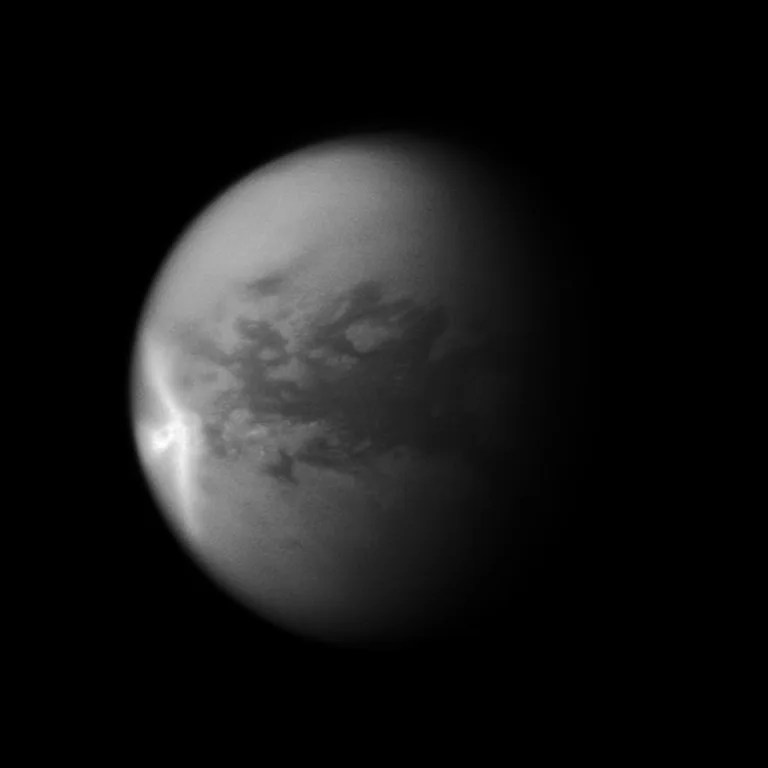2 min read

During this flyby, the visible and infrared mapping spectrometer (VIMS) was prime at closest approach and acquired high resolution images of Belet and its limits with the surrounding dune fields. The imaging science subsystem (ISS) rode along with VIMS to acquire high-resolution images at low phase angle. Later during the flyby (but after closest approach), VIMS stared at Titan to continue its mapping of the cloud coverage in order to detect any seasonal change in the cloud distribution before and after the equinox. ISS rode along with VIMS to acquire regional- and global-scale observations of Titan's trailing/anti-Saturnian hemisphere, including western Belet and Senkyo. ISS also monitored Titan's haze and clouds over a period of 19-plus hours while riding along with the ultraviolet imaging spectrograph (UVIS), VIMS and the composite infrared spectrometer (CIRS).
The flyby is also of interest to the fields and particles instruments. T-76 is a post-dusk, upstream equatorial flyby at 1,863 kilometer altitude, similar to the prime mission T-34 flyby. During T-76 the magnetometer (MAG) investigated the structure of Titan's induced magnetosphere along the ram (i.e., the direction of spacecraft motion) direction while being on the day side, a geometry which is ideal for pressure balance studies.
Date
May 8, 2011
Altitude
1,164 miles (1,873 km)
Speed
13,000 mph (5.9 km/sec)







